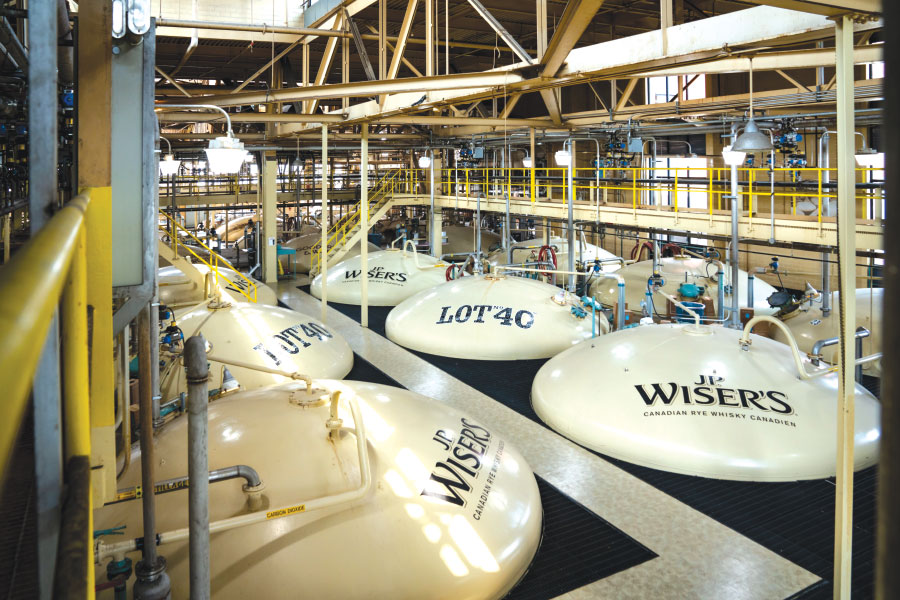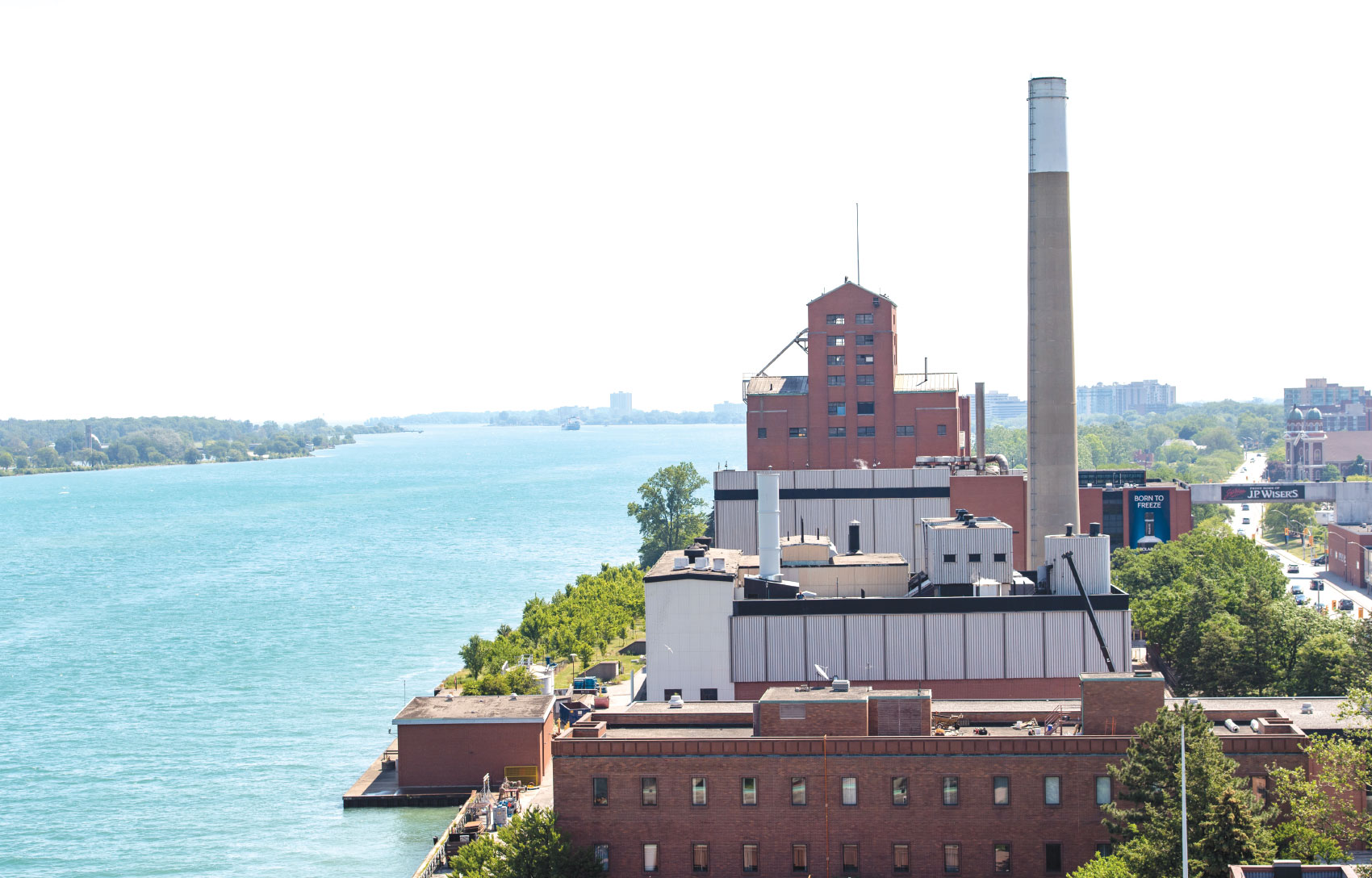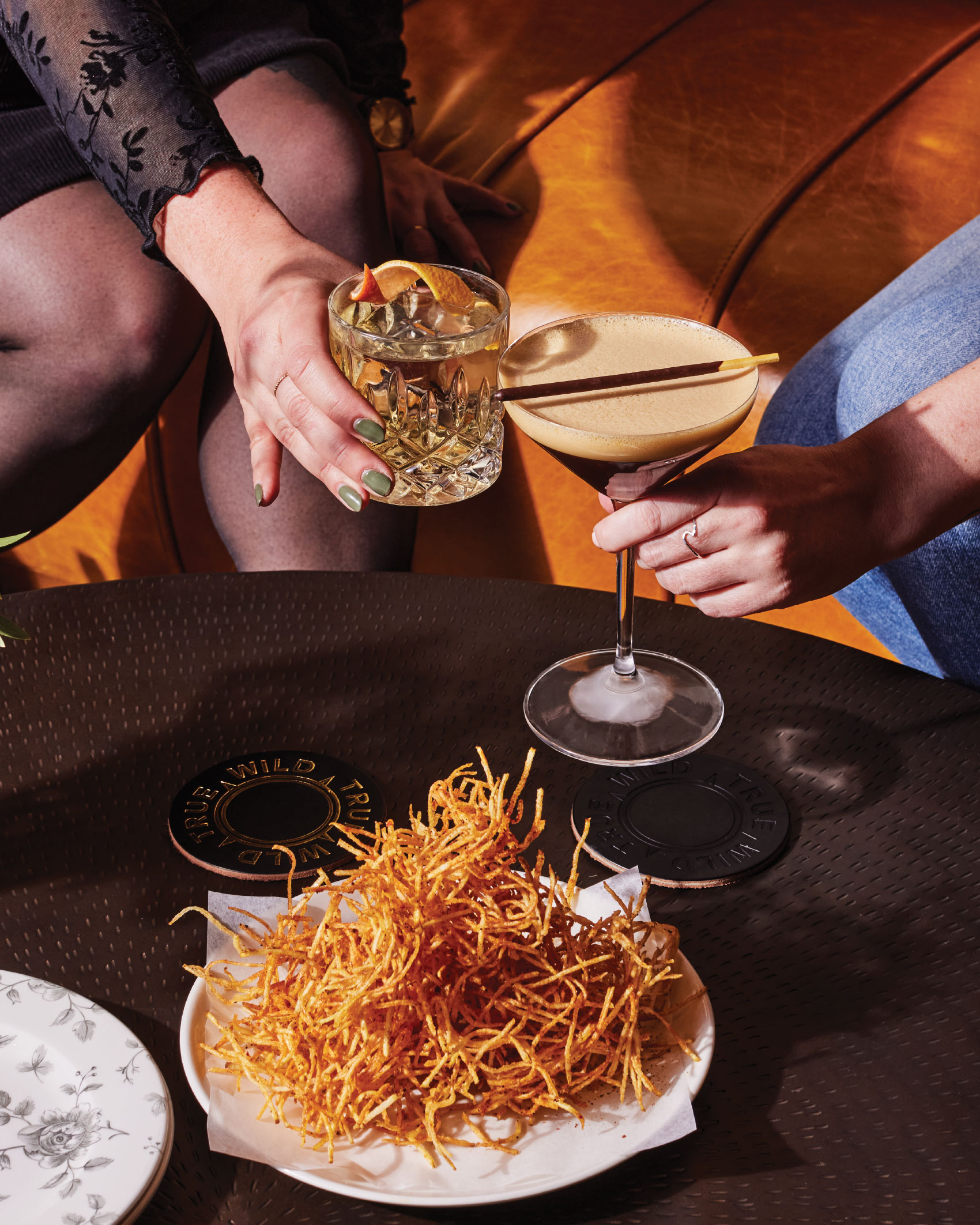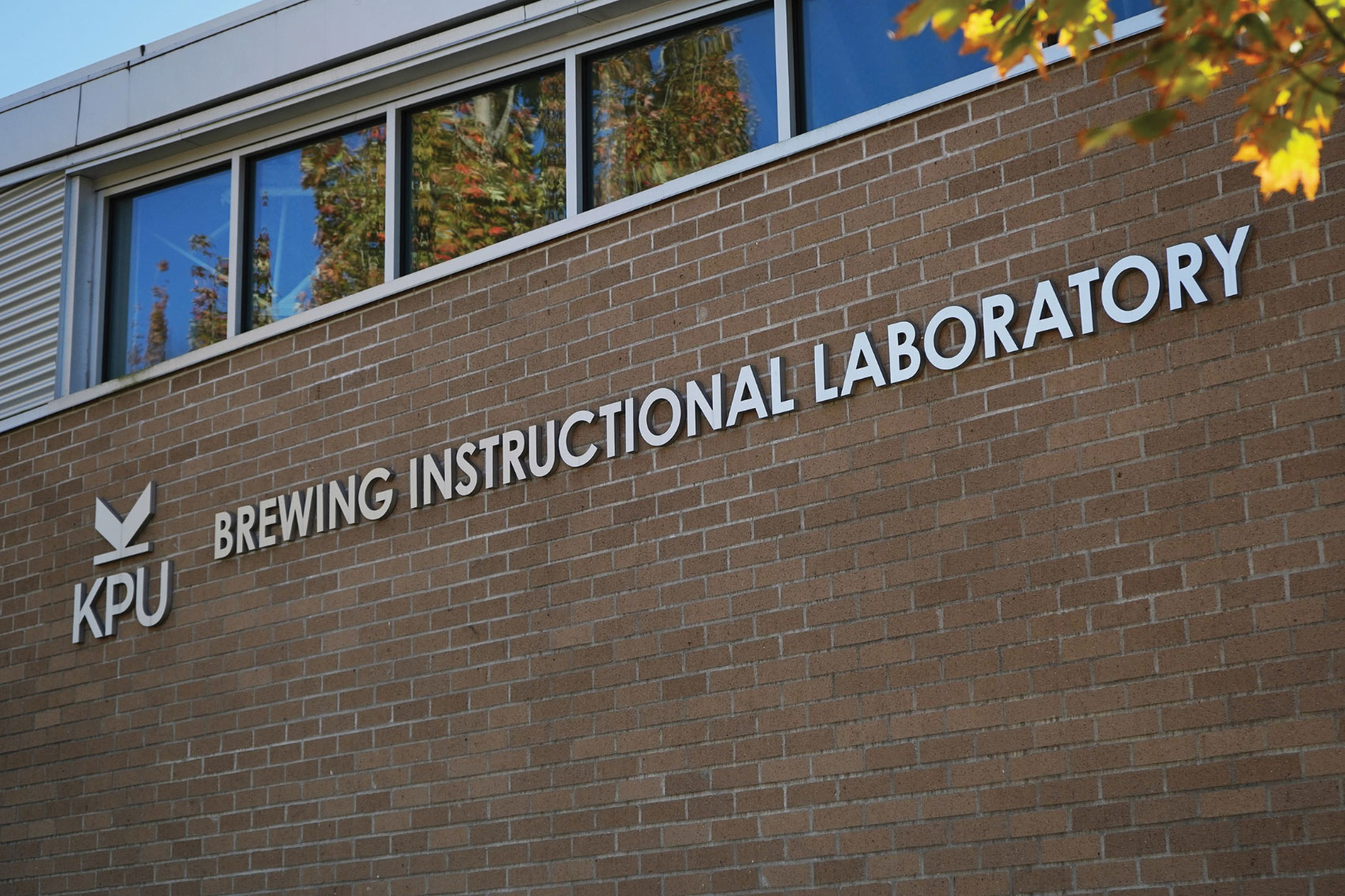Don Livermore, PhD, the master distiller at Hiram Walker & Sons, just might know more about Hiram Walker’s story than anyone else.
Born in Massachusetts in 1816, the distillery’s namesake Hiram Walker moved to Michigan, working as a grocer and eventually starting a general store. He had the mindset of an entrepreneur, running moonshine through charcoal and selling it for five cents per gallon. Walker had a growing interest in distilling, but with prohibition taking hold in the U.S., he looked north and purchased a plot of land across the Detroit River, in the area now known as Windsor, Ont. He purchased the land in 1856, and it began operating as a distillery in 1858.
At the time, Windsor was sparsely populated. As such, Walker built housing for those working at his distillery. Although he was operating out of Windsor, Walker commuted every day from the U.S. to the distillery. He remained an American citizen for his entire life. Deeply entrenched in the history of Windsor, Walker’s son became the first mayor of Walkerville, a historically significant area in Windsor, noted to have been a planned city built by Walker. “Canada was built on whisky,” said Livermore.
When he does whisky tastings, Livermore asks, “What do you believe grew Canadian whisky more than anything else?” He says people instinctively say, “Prohibition.”
“Quite frankly, it did not,” said Livermore. “Prohibition would have been like COVID-19 was for our bars and restaurants. You lost your customer and that’s not a good scenario to be in.”
“I can confirm today that we are making more spirits now than we ever have in our history of the company.”
Don Livermore, PhD, Hiram Walker & Sons
Livermore says the most important years in Canadian whisky history fall within the range of 1861 to 1865, just after the distillery was started. The U.S. Civil War was one of the biggest events for Canadian whisky. Although beer was available, whisky kept longer, and the U.S. purchased Canadian whisky in massive quantities. “Whisky is what they drank,” said Livermore.
During this time, many of the fathers of Canadian whisky emerged – Hiram Walker, J.P. Wiser and Henry Corby, to name a few – all of whom took advantage of the disruptions to the south. The growth led the Canadian government to require documentation for whisky production processes and quantities in the 1860s, as prior to this there was very little documentation and most of the process was communicated verbally. Through this documentation, it’s become apparent that early on, Walker did not know the science behind making whisky.
Rather, Livermore says Walker would “repeat things over and over by the phase of the moon.”
The earliest records of the distillery are from the 1860s. “There are some cool stories,” Livermore said. “Even the local church was named after his wife, Mary, so that’s how much influence he had.” Not too long ago, a statue of Walker was installed on the corner of the distillery to honour his legacy.

The Walker family owned the distillery into their third generation, through to Walker’s grandchildren from 1910 until around 1926. Once prohibition began to put a strain on distilleries in Canada, Harry Hatch entered the picture.
“Good things were not happening during prohibition,” Livermore said. “There were some people that took advantage of that situation. One was Harry Hatch. Harry Hatch was a salesman out of the Corby [Spirit and Wine] distillery at that time who also owned a bar in Oshawa, Ont.”
Livermore says Hatch maintained good relationships with his patrons and often had them performing favours, running cases of liquor across Lake Ontario. Hatch had over 450 fishermen working for him at one point, known colloquially as Hatch’s Navy. Hatch attempted to buy the Corby distillery, but was denied, which led him to quit and purchase Hiram Walker & Sons in 1926.
“Canada was built on whisky.”
Don Livermore, PhD, Hiram Walker & Sons
Jumping to the late-20th century, Allied Domecq purchased the distillery in 1989, and in 2005 Pernod Ricard and Jim Beam bought the shares of Allied Domecq and split up the brands.
Pernod Ricard now owns Hiram Walker & Sons. “It’s a reputable company that has stood the test of time,” Livermore said. “I can confirm today that we are making more spirits now than we ever have in our history of the company.” He also says it’s rewarding to see the popularity of Canadian whisky continue to grow.
Currently, the distillery has 450 employees. The equipment they use is standard column, pot and rectification stills. Most grains come from a 100-kilometre radius of the distillery, and the corn comes from southern Ontario. As they make rum on site, they also bring in molasses. Bottling occurs on site, but there are 16 storage facilities within about 32 kilometres of the distillery for aging. To give more terroir to the final product these sites are not temperature controlled, and they have American and European barrels for aging. Many types of popular spirits come out of the Hiram Walker & Sons distillery, including J.P. Wiser’s, Pike Creek, Lamb’s Rum, Polar Ice Vodka and McGuinness liqueurs.
The quickest production product is vodka, taking only five days. In contrast, they have whisky that’s currently aging to 42 years. “I always aim to have my inventory left better than I find it,” Livermore said.

Most of the distribution is in Canada, although there has been growth in the U.S. The J.P. Wiser’s 10-year Canadian whisky first launched in Sweden, since it’s a market that drinks less alcohol, but seeks higher quality products.
Hiram Walker & Sons constantly seeks to improve sustainability. The team regularly looks for energy savings and installs more efficient equipment. They have increased production yields to decrease energy consumption. Additionally, they have local partners who take wet format grain, instead of using energy to dry it onsite.
With so many large brands operating out of Hiram Walker & Sons, it is no surprise that Livermore’s distilling is well-awarded too. Named the first-ever Canadian Whisky Blender of the Year in 2019, and again in 2020, the product quality and consistency show.
When asked what he enjoys most about making new spirits, Livermore said, “When I’m doing tradeshows or masterclasses in another country. I also enjoy changing the mindset of an unexpected whisky connoisseur.” What could possibly be next for a distillery with such deep historical roots? Well, Livermore sees Canadian whisky as an area with space for creativity and innovation; one that is adaptable to future whisky drinkers, too.
Tours of the distillery, along with the tasting operations, are available to the public. Interested clientele can visit jpwiserstour.ca to learn more.
Continuing to release products like Lot 40, a 100 per cent rye whisky that is new to market and a limited-edition J.P. Wiser’s Wood Series, Hiram Walker & Sons will not only have an influence on Canadian whisky’s history, but also its future.




